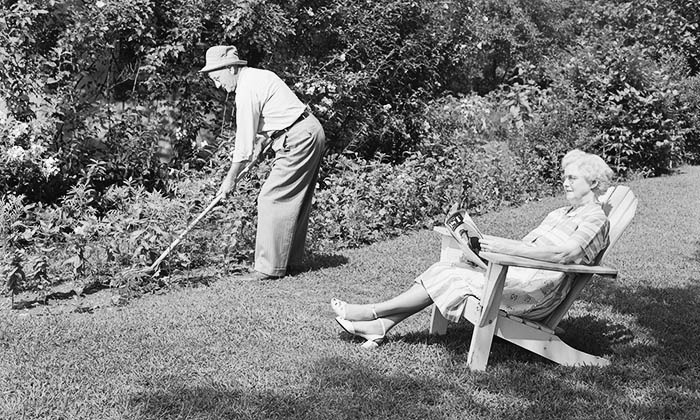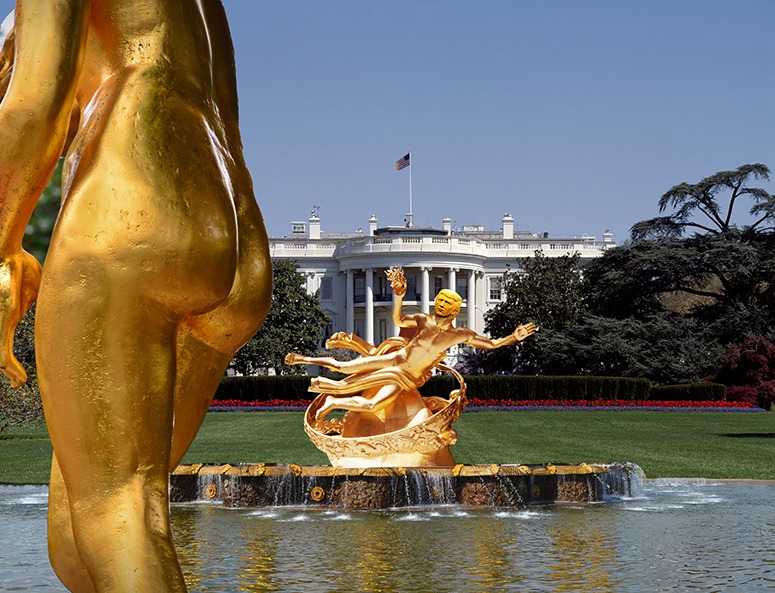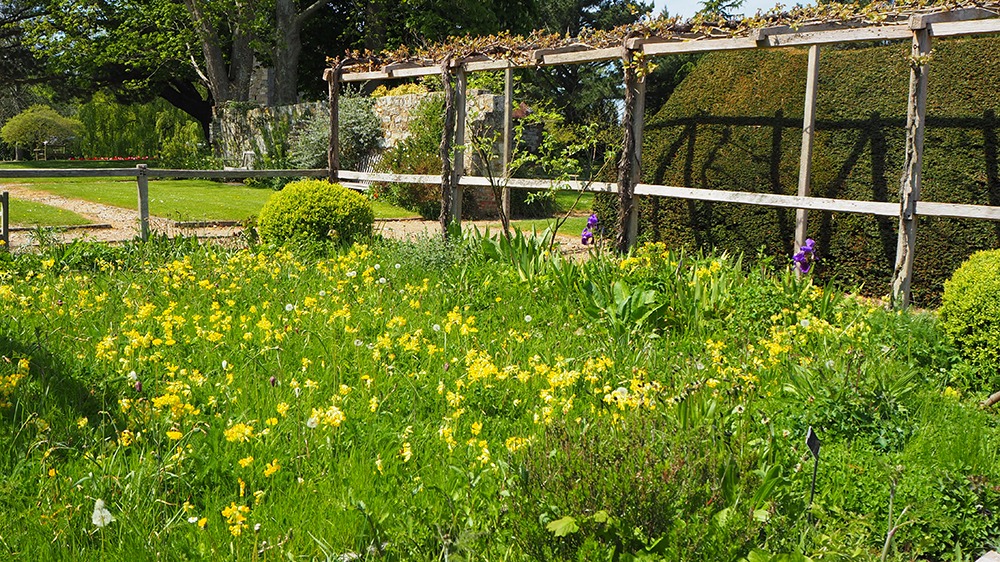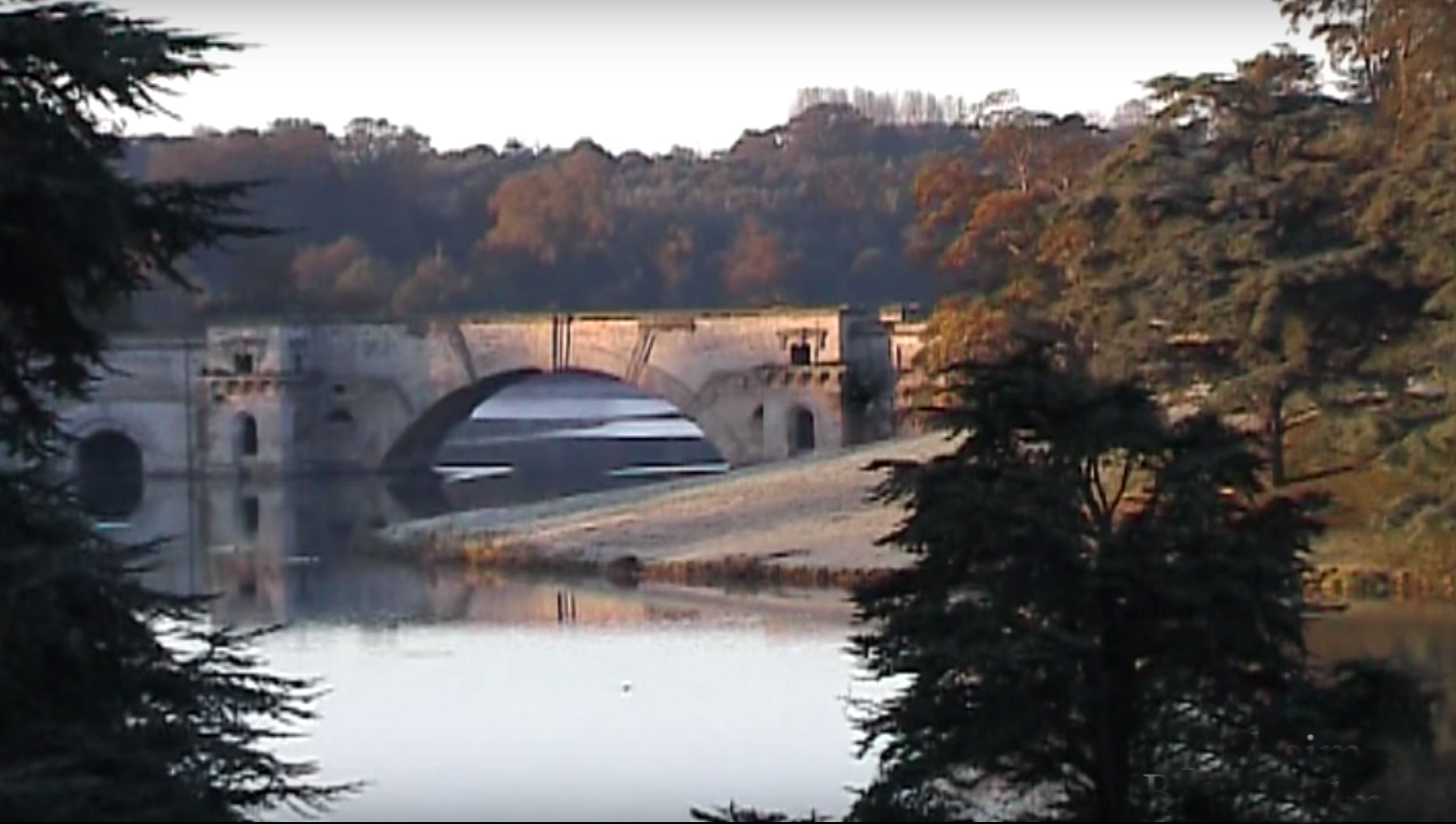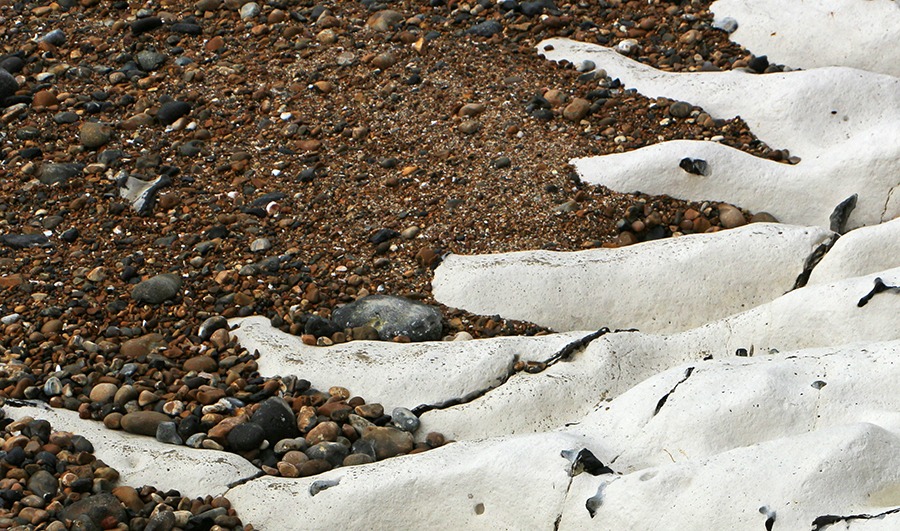The Guardian has just reprinted a 1964 article on lawns by Moira Savonius, who also wrote books on fungi and on flowers. She sees lawns as a ‘cult’. My impression is that grass cutting has declined in public parks and stately homes but that the area they occupy in private gardens is but slightly diminished – and maybe not at all if you allow for fact that motor mowers were , relatively, much more expensive in 1964 and so many more people ‘neglected’ their grass in the suburbs. A curious feature of the black and white photo accompanying the article is the Adirondack Chair – I believe they were most uncommon in 1960s Britain.
Category Archives: Garden Design
Donald Trump unveils new White House garden design
The design objectives were to make fellow Americans feel great about themselves, to restore women to their proper place in American life and to show that the garden of the White House can serve a higher purpose than Michelle Obamacare for sustainable vegetables. The designer is believed to have been recommended by a Mr Putin who has an important position in Russia and good taste in golden statues of bimbos.
A cub journalist working for Gardenvisit.com was invited to be a judge on the internal competition for redesigning the garden of the Trump White House in Washington DC. She was flattered but turned down the opportunity when required to wear a gold bikini.
Michelham Priory Medieval Garden
Michelham Priory Garden is a delightfully tranquil moated manor house in East Sussex. What I like most about it is the recreated medieval garden. And what I like most about the medieval garden is the ‘flowery mead’ and the turf seats. Our knowledge of Michelham – and of medieval gardens in general – is not enough to say whether or not the details are accurate. But, to me, these details feel right and this is not a feeling I have about comparable recreations, either by the Garden History Museum or National Trust. Nor do I have this feeling about cathedral cloister garths. They are all managed with lawn mowers and this device was invented in 1830. The usual problem with medieval recreations is that their designers are muddled about the differences between medieval, renaissance and baroque gardens. So they use clipped hedges, which were a baroque feature, to make renaissance-style knot gardens. It does not make sense!
Capability Brown: Lenses on a Landscape Genius Exhibition 22 June – 29 July 2016
The Landscape Foundation has organised an exhibition of photographs of Capability Brown’s work. It will be on show at the Building Centre, Store Street, London WC1E 7BT, from 22 June to 29 July.
Brown’s reputation has been in flux. Sky-high at the time of his death and at the time of his 300th centenary, in 2016, it had a profound slump from late 18th century to the early 20th century. For artists and novelists, this is not uncommon and re-examinations can be done by examining their original works. For works of landscape architecture, this is scarcely possible, because they are in constant change. So a photographic exhibition is an excellent idea. We can examine Brown’s work at one point in time.
See also
Capability Brown in Kent – book review by Tom Turner
Was Lancelot Capability Brown a landscape designer of genius?
Fernando Gonzalez’ Buddhist approaches to the design of gardens and landscapes
The photograph of Brighton beach, below, reminds me of Fernando Gonzalez’s Pure Land Garden:
Fernando is exploring the future role of Buddhism in garden design. The videos, below, have a comment on his 2015 Pure Land Garden and a 2013 interview with the designer.
Fernando wrote of the Pure Land Garden that: A curvilinear white shimmering structure captures the organic shapes of the landscapes and is inspired by nature’s natural rhythms. A planting colour palette influenced by the principal colours used in Buddhist art and ritual, warm yellows, oranges, blues and reds, emerge through a matrix of tussocky grasses. Three multi-stemmed Koelreuteria paniculata , golden rain trees, complete the well-being garden, exploring the potential of harmoniously combining the artificial and natural in a new artistic.
This video shows two contemporary Buddhist-inspired garden designs, at the 2013 Chelsea Flower Show: The Sound of Silence Garden Fernando Gonzalez (interviewed by Tom Turner) and the Mindfulness garden by Martin Cook (a stone-carver and calligrapher).
Was Lancelot Capability Brown a landscape designer of genius?
2016 marks the 300th anniversary of the birth of Britain’s most famous landscape architect and garden designer. Lancelot Capability Brown was baptised on 30 August 1716 and when he died at the age of 67, on 6th February 1783, his reputation was sky high. By 1800 his reputation was mud-low. In 2016 Brown’s reputation is, once again, sky high.
In 1987, I had a go at explaining why this happened and, rightly or wrongly, have not changed my mind. You can read the explanation here or listen to an illustrated version on the above video. The short summary is that Brown’s popularity crashed because a change in the predominant understanding of ‘nature’. Even Gertrude Jeykll dissed Brown. His reputation only recovered when Marie-Luise Gothein, Christopher Hussey, Nicholas Pevsner and others appreciated that Brown worked in a classical style. He was not confused about the appearance of ‘wild nature’ or how it should be ‘imitated’.

